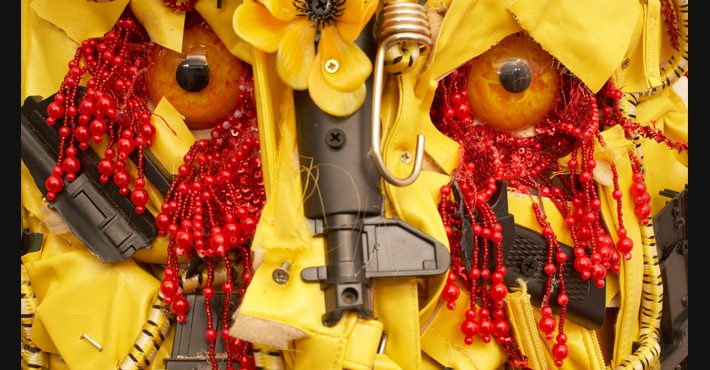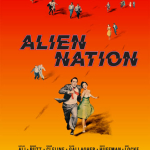- Artists
Hew Locke, The Kingdom of the Blind, detail of work in progress, 2008. Photograph © Roberto Rubalcava
‘At its heart, my work is both political and highly personal, often taking me on strange dreamlike journeys where the past and the present merge and then separate’? Hew Locke
For the past ten years, Hew Locke’s work has explored the visual display of those in power and those who aspire to power. His immense and complex architectural installations and, more recently, his monumental wall drawings and figurative sculptures are made from the mundane, bright and sparkling ephemera of street markets and pound shops. They adopt, question and subvert the iconographies and language of royalty and government in relation to notions of power and cultural identity.
In this major new installation for Iniva at Rivington Place, Locke brings together these formal and thematic elements of his practice to create his first ever ‘museum display’ – a fictional collection of the possessions of an imaginary ruler. The installation combines a carnivalesque frieze of monumental figures (reaching up to 14 ft tall) with an elaborate backdrop of wall drawings. Depicting this fictional leader’s rise to power, Locke’s figures enact victorious moments in battle and resemble elaborate votive objects – composed of intricate combinations of fake leather handbags, miniature plastic animals, doll parts, sequins, chains and fake weaponry.
This chaotic and flamboyant commemoration of individual power becomes a poignant parody of today’s social and political global climate. Presented through the formal language of traditional museum display, Locke’s allusions to the language of contemporary dictatorships and war assume a powerful commentary on our national cultural institutions and their relationship to the modern constructs of history and society, cultural identity and national pride.
Locke’s personal history – he spent the first seven years of his life in Edinburgh before moving to the newly independent Guyana and later returning to London in the 1980s – feeds into his ongoing interest in the links between personal and national identity. This piece also draws on the iconography of great historic battles, such as the Battle of San Romano, the Bayeux Tapestry and the British Museum’s Assyrian Lion Hunt reliefs.

